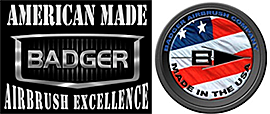
The Land Rover has served the British Army and other British Services for a quarter of a century in various forms, also equipping the armies of many countries who traditionally take their military needs from British industry. The Rover as it is officially known is used in many roles. It is seen as a general purpose field car, for liaison, reconnaissance, patrol, courier, staff or personnel transport. In long wheelbase form its roles include gun tractor, a carrier for the recoilless anti-tank gun, wireless and command car, personnel carrier and armed patrol vehicle for the Special Air Service or the reconnaissance platoons of other units.
A field ambulance kit enables the standard vehicle to be fitted to carry stretchers for casualty evacuation. Recently the Rover has appeared as the standard British Army ambulance, special bodywork for this has proved so effective in this role that it replaces heavier larger vehicles as the standard British ambulance at divisional or brigade levels.
Use of the Land Rover with special ambulance bodywork goes back to 1956 when a batch of the production version, on the 107-inch chassis, was built for the RAF. Designated truck 1/4 ton, 4 x 4 Ambulance Special the requirement was for a suitably compact vehicle for the Mountain Rescue teams of the RAF.
This Rover ambulance had the standard commercial four cylinders 2 litre petrol engine of 52 bhp. The bodywork was framed and paneled in aluminum and lightweight thermal insulation. The driver and a medical officer sat in the cab, the inside fitted for two stretchers with a seat for a medical orderly. The stretcher racks folded back to accommodate three seated casualties. These original ambulances were bodied and completed by Bonallack & Sons Ltd. The overall length was 15ft. 4 ins.
The Kit:
Well, it was time to add a new model kit to my British subjects shelf. This is on display next to the 1/35 Tamiya Quad Gun Tractor featured here a few months ago. This is the BRITISH + AMBULANCE ROVER 7 kit #082 from Tamiya. It is not a new kit, it has a stamped year, 1976 to be exact, and I’m sure that all these years it has been featured in many articles and reviews.
For a model kit this old, the sprues are very clean, little seam lines and no flash whatsoever especially on the small parts. There are some bothersome push pin marks, but these will be out of sight once the model is built. However, if plan on displaying this model with open rear doors, there are a few pin marks that require some attention on the inner walls. After some deliberation, I decided to build this one with the rear doors closed.
The roof is a one piece deal and snaps easily on the body. Gluing it is up to the modeler, I decided not to glue mine to be able to show at least the front cabin. Speaking of the front cabin, it is bare with just the necessary amount of detail.
Being a pre-teen back in the early 70’s, I still recall the bareness of the dash board from my dad’s 72 Chevy pick-up. 3 shifts and the shifter was on the steering column. 2 different subjects, but it couldn’t help bringing some memories. That’s the truck in which I learned to drive ‘stick’ back in the day.
Painting and Weathering:
Painting the British Rover 7 Ambulance was easy. The instructions call for a dark green and black to recreate the famous British ‘Mikey Mouse‘ camouflage pattern. I used Tamiya XF-58 Olive Green for the base color. This is a color I love to use unsealed on figure uniforms. Yes, straight from the airbrush, the XF-58 color doesn’t look quite right. However, it changes drastically when we apply the clear coat varnish on it. In this case, Testors Acryl Flat Clear. Remember folks, I don’t Gloss coat for decals. They go straight onto a puddle of Microsol or Walters Solvaset.
For the black camouflage pattern, I used Tamiya NATO Black XF-69. The big white squares were measured from the decal sheet and they were painted with Tamiya Flat White XF-2. Only the red crosses from the decals were used. A little bit of Microsol decal solution was used to conform the crosses to a line of rivets on the side panels. Once dry, the model was covered on the second coat of Acryl Clear Flat to protect the decals from the upcoming enamel washes.
I started by airbrushing a fine mist of Vallejo Pastel Green (70885) to make the paint look faded. I then gave the model an entire wash with Mig Productions Dark Wash. Once it dried, I gave the model some streaks and gunk accumulation with AK Interactive streak effects from their OIF & OEF set. A second set of streaks was also applied with NATO rain marks (AK-074) and last, a set of streaks with pure white oil from a generic oil set from the megastore ;o) The last step was adding Vallejo Light Ocre Pigment mixed with mineral spirit around the tires and chassis.
The pictures included with the instructions show the interior of the rear cab. The model as with the real thing is quite bare and a far cry from the modern ER on wheels. There is also a S.A.S Land Rover from Tamiya based on the same mold. Because of that, the figures provided come in a separate ‘sprue’. I wouldn’t complain at all; given its age, the figures are very clean when compared to other kits from the era. In my humble opinion, they are VERY usable should you decide to make a nice diorama display.










































